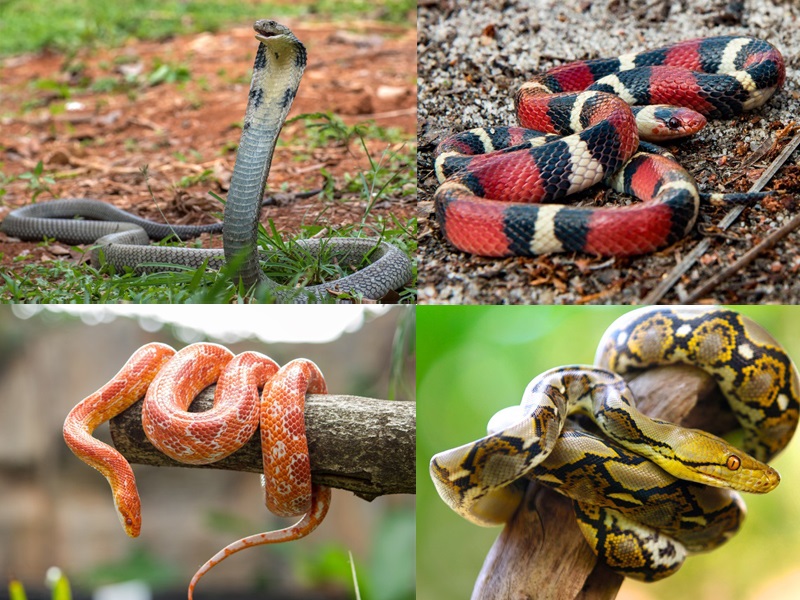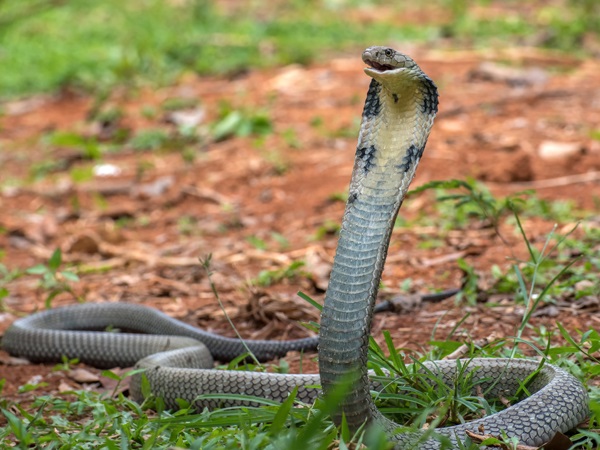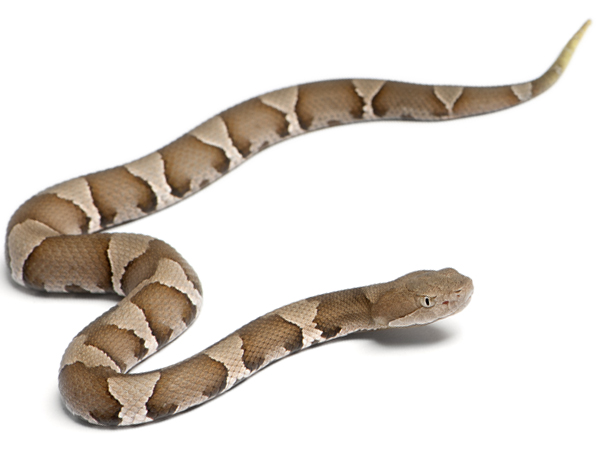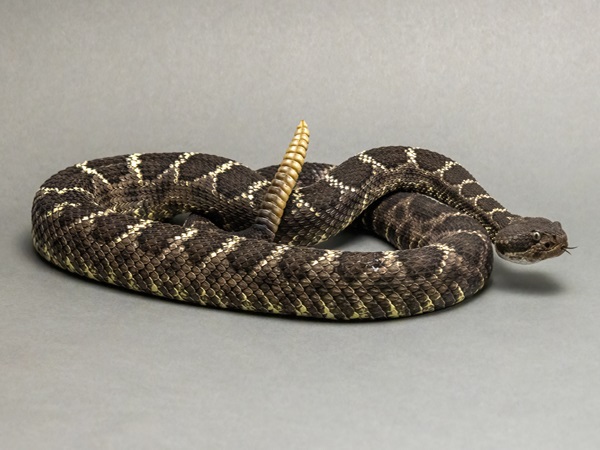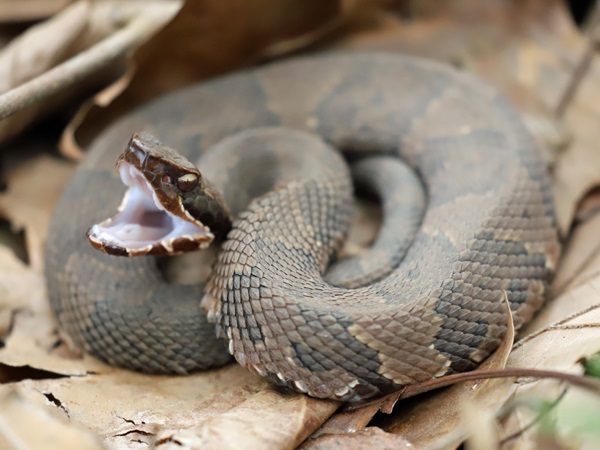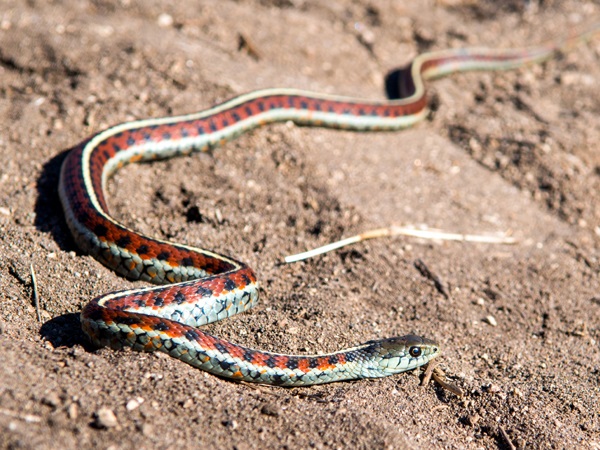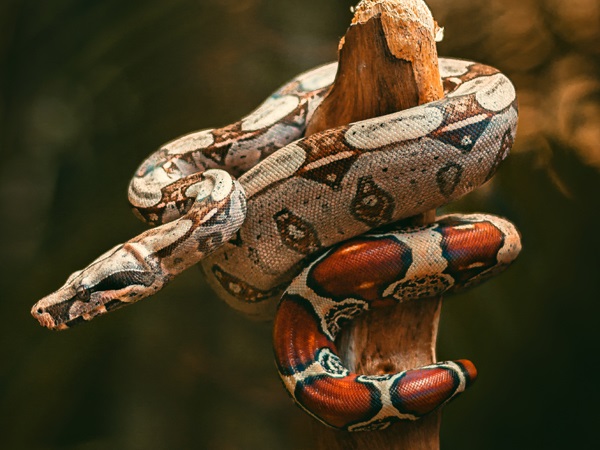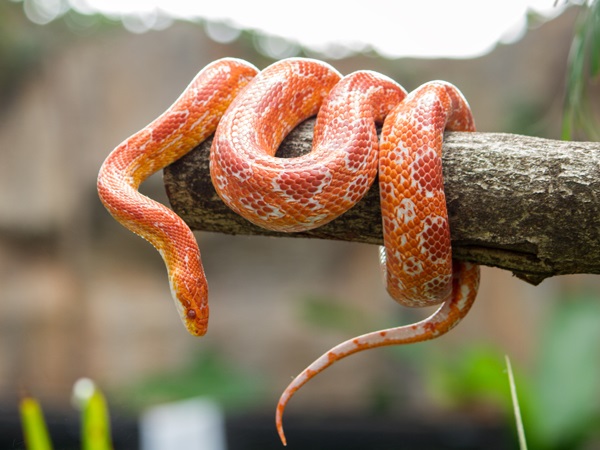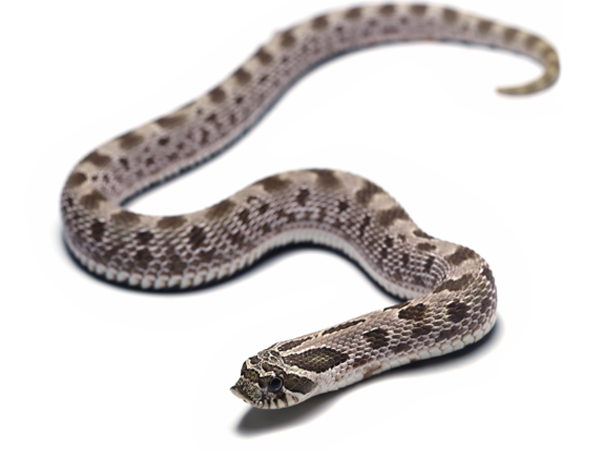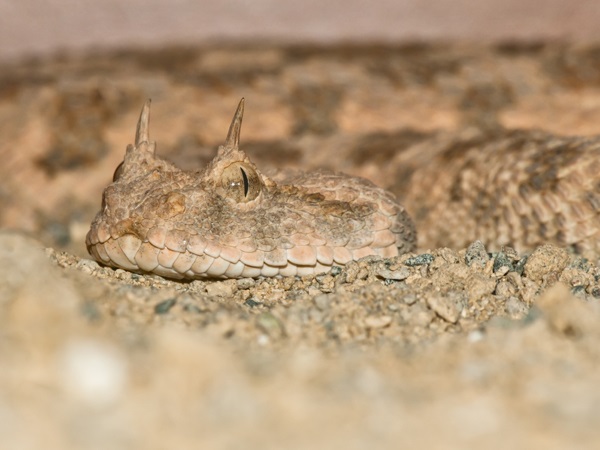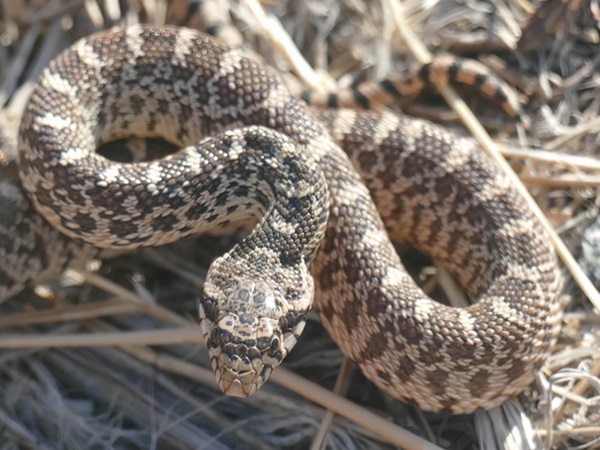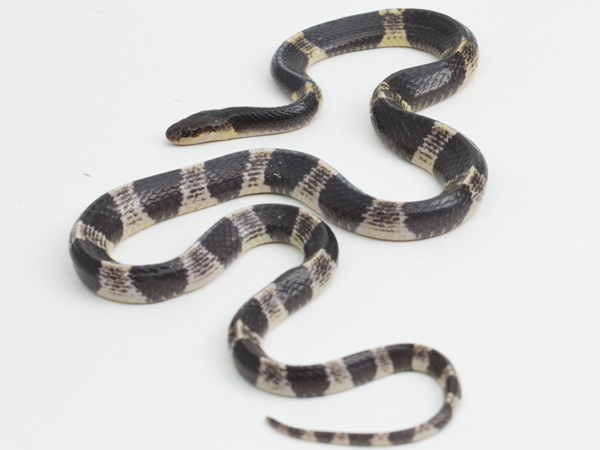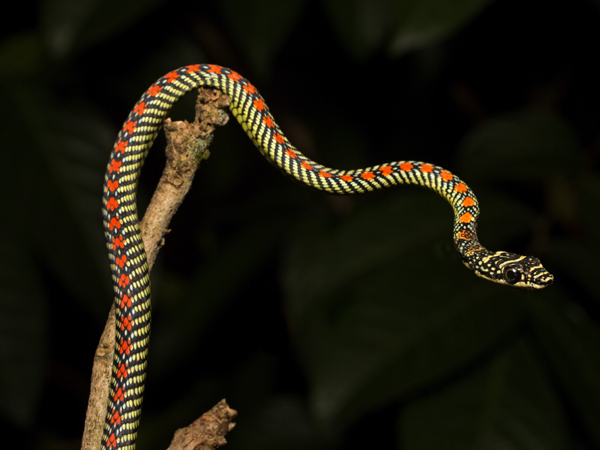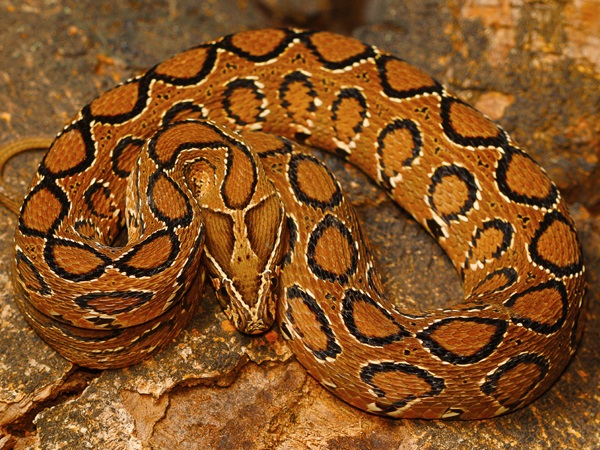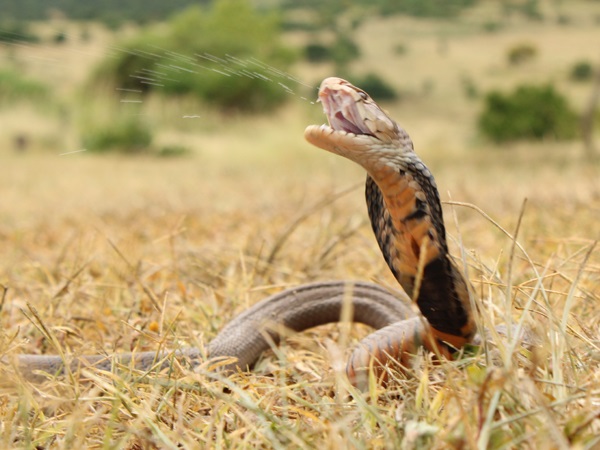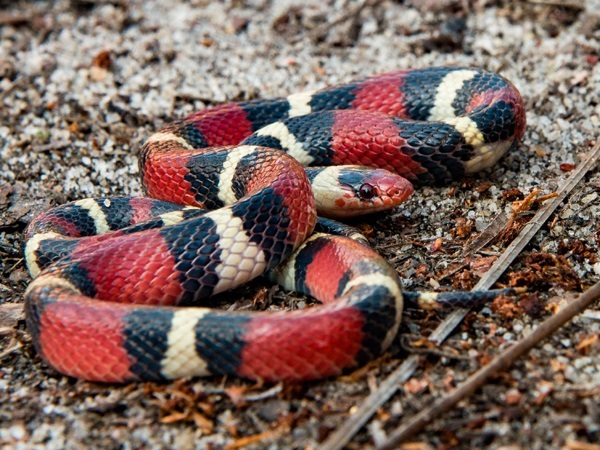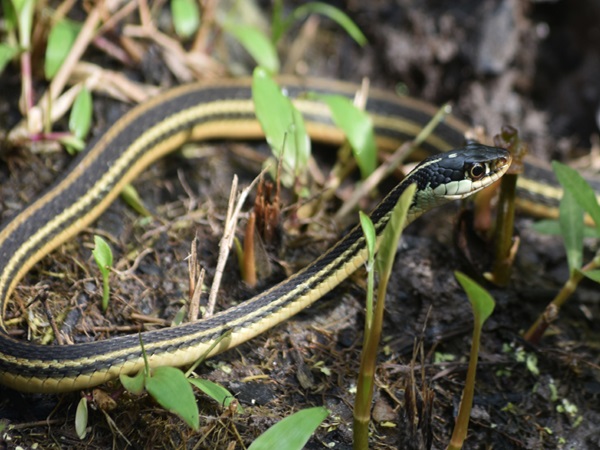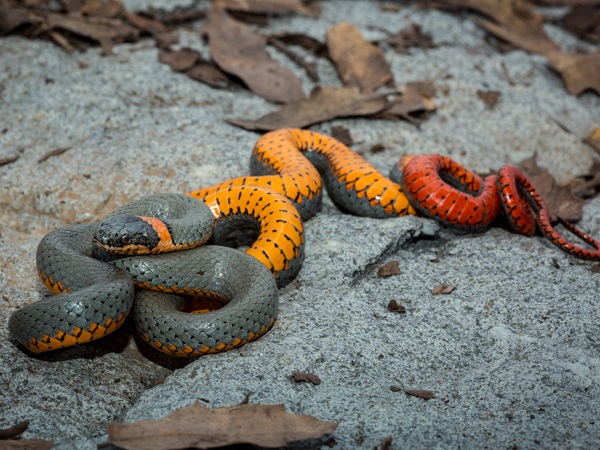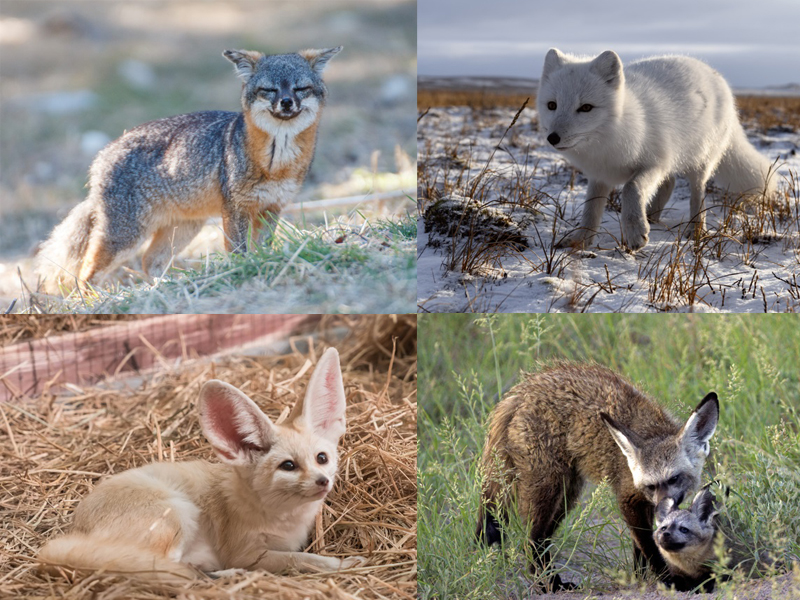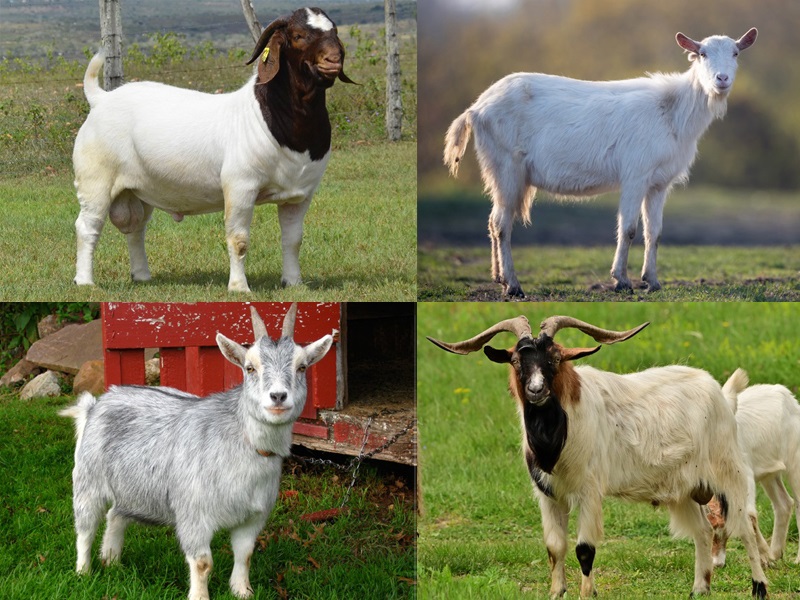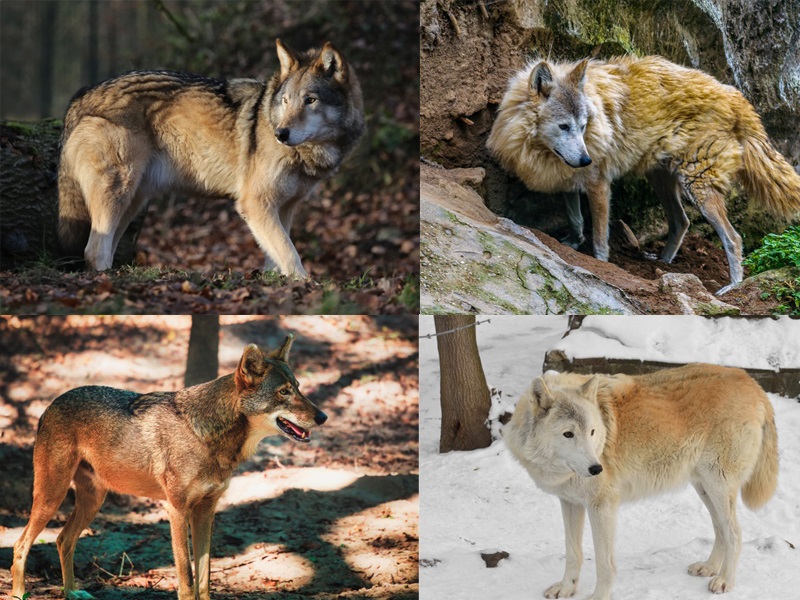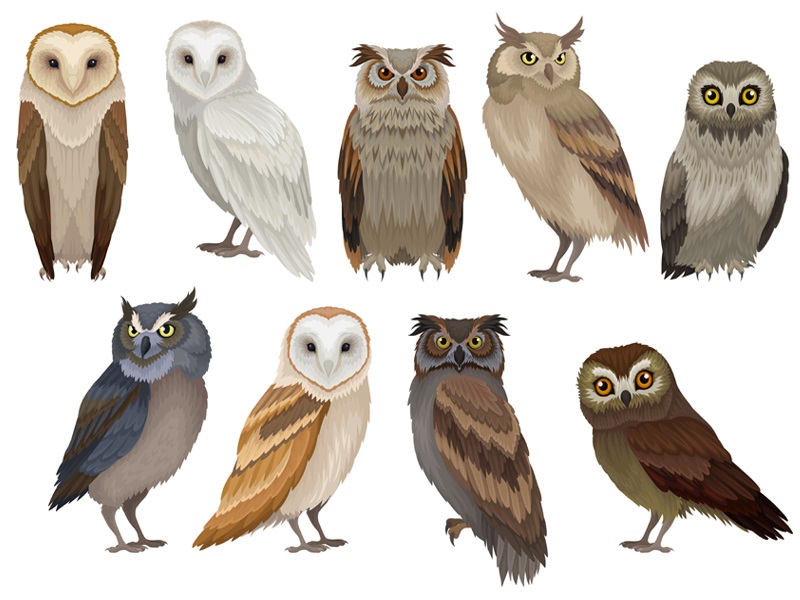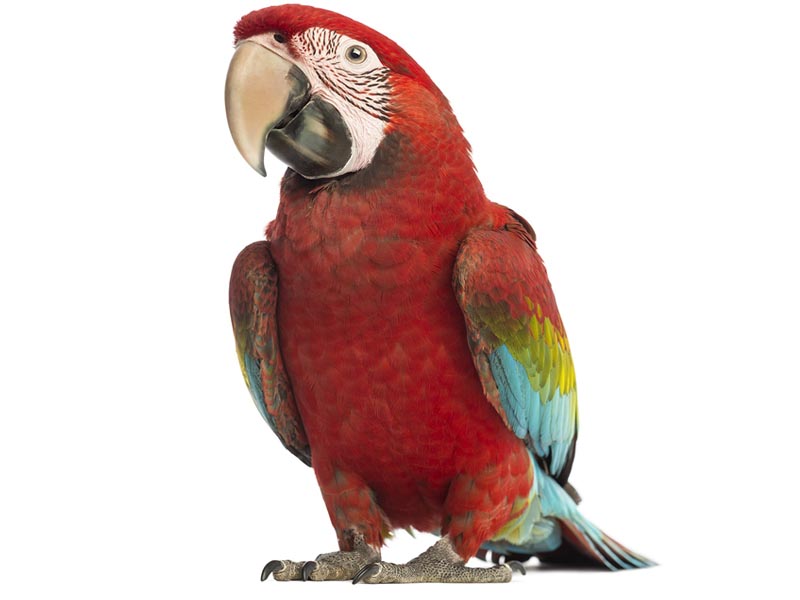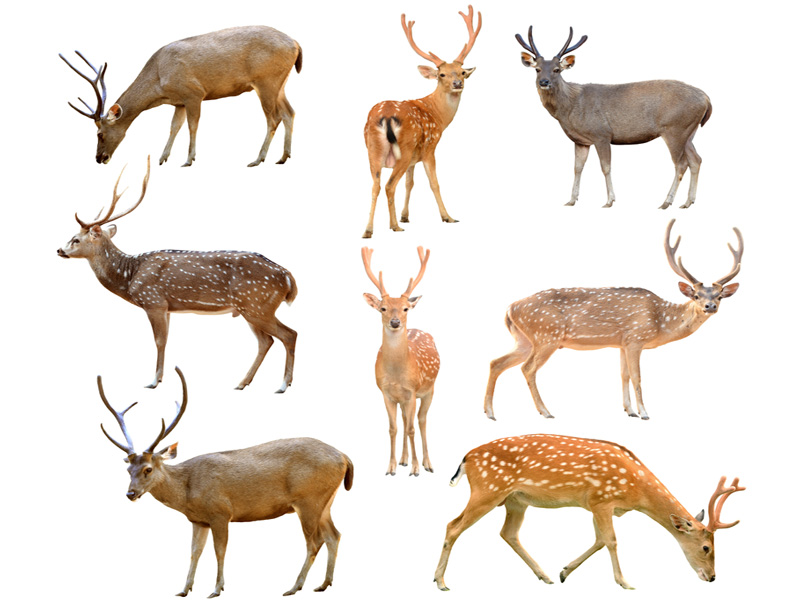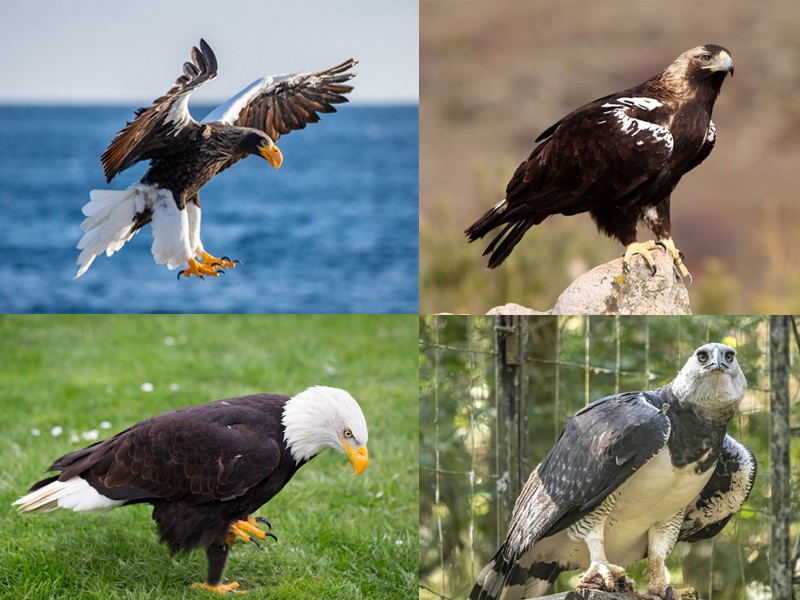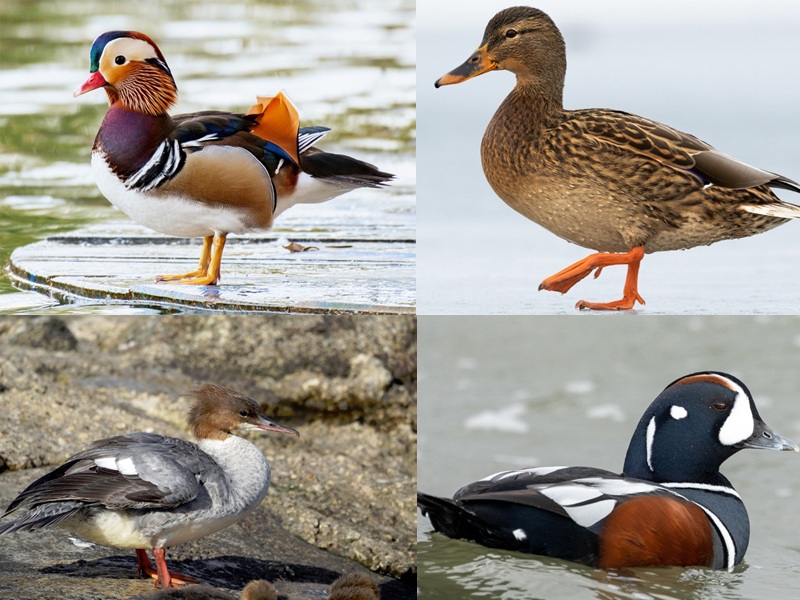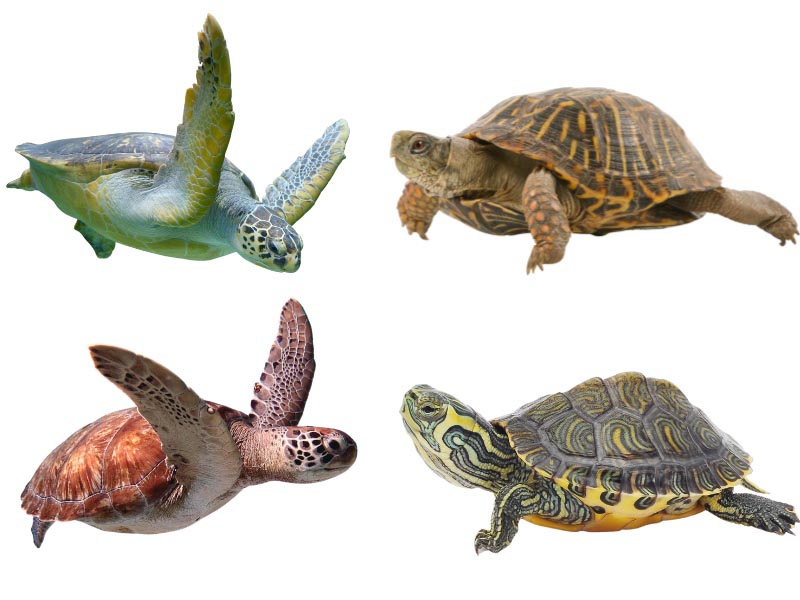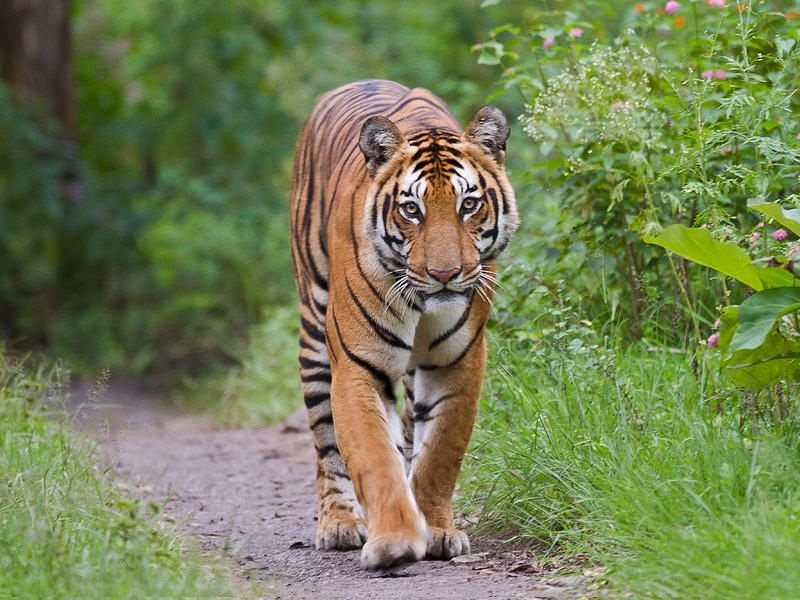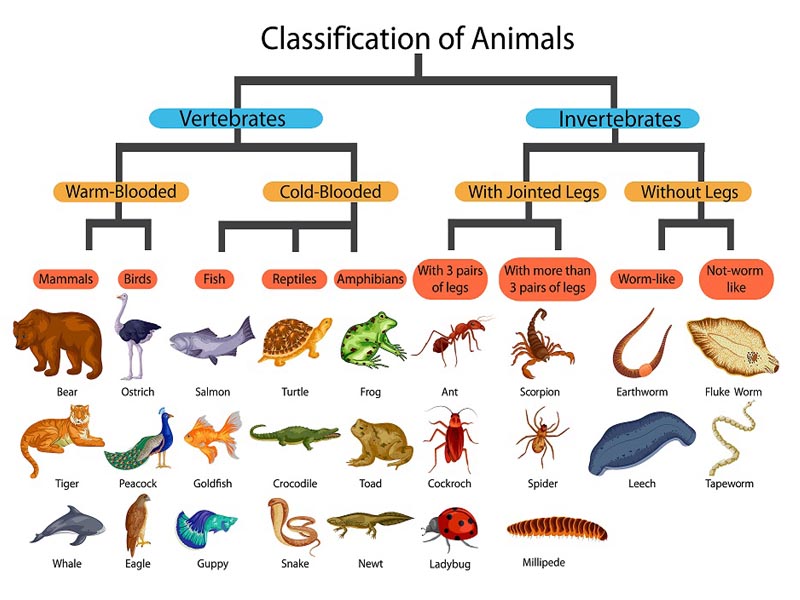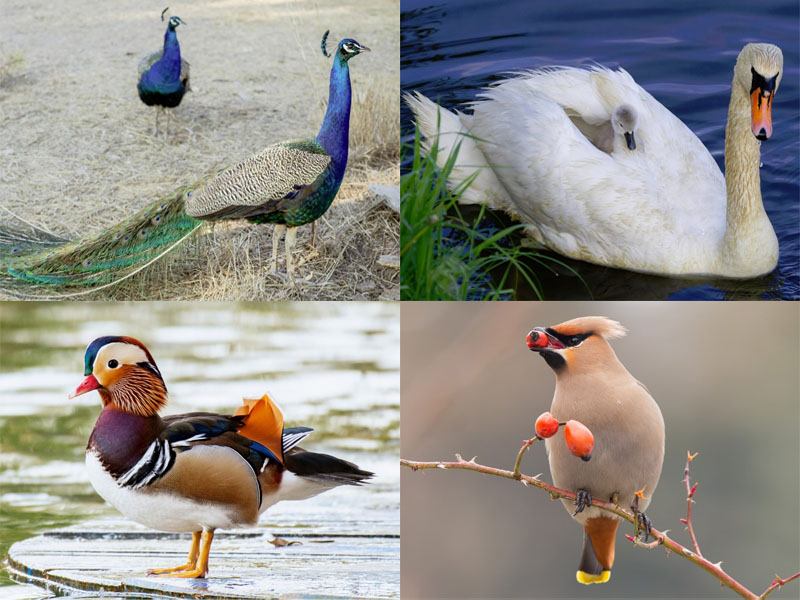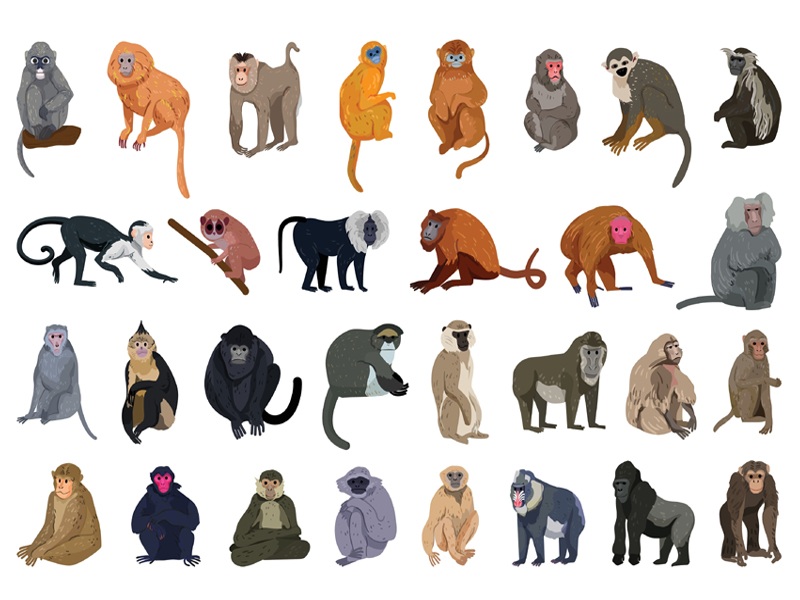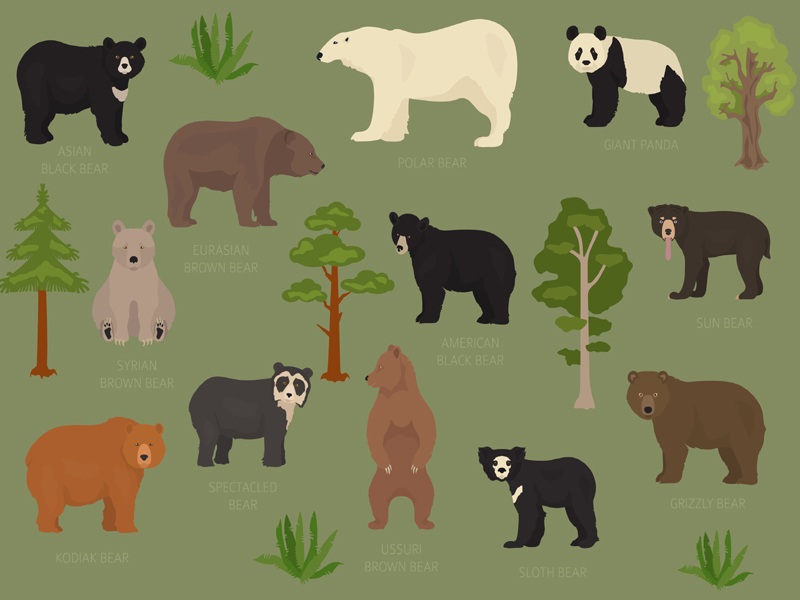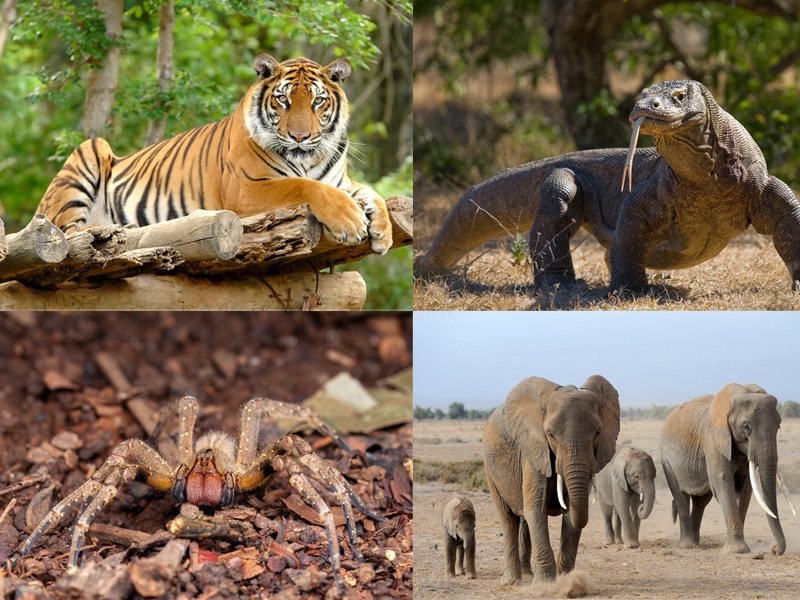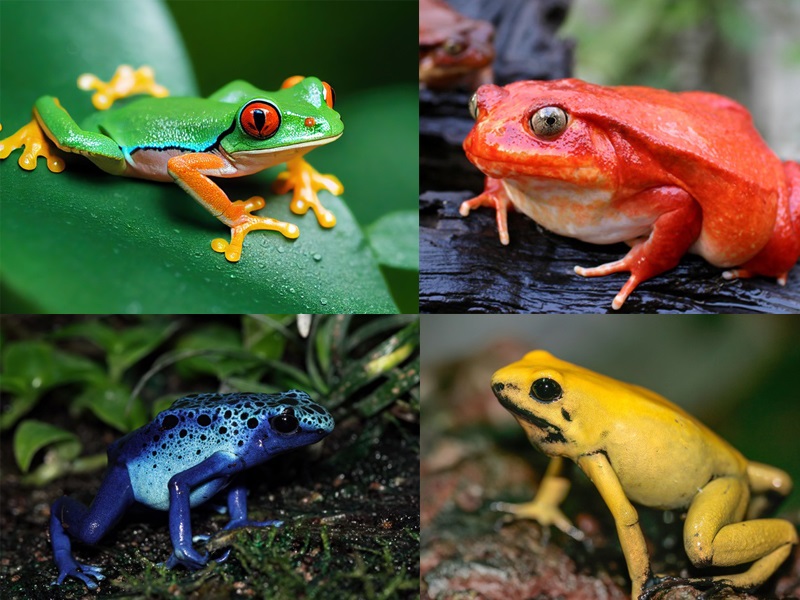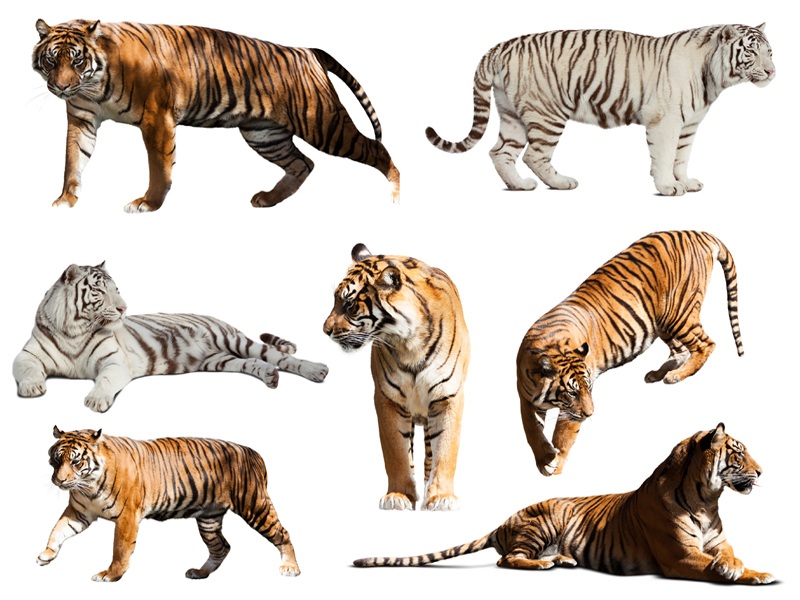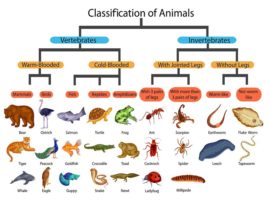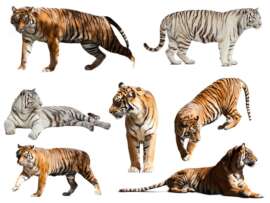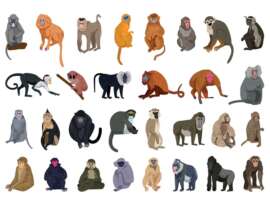Did you know that there are about 3000 types of snakes worldwide? Yes! The world of these reptiles is quite fascinating, with a history that dates back to almost the Dinosaur period. Although we revere these creatures as deities in some parts of the world like India, there is a deep-rooted fear ingrained in our minds considering their venomous bodies!
The very thought of these slimy, slithering creatures give us goosebumps and sends a chill down the spine! But relax, guys! Not all snakes are poisonous! Before the fear converts to phobia, we recommend you spend some time understanding these amazing creatures!
In this article, we shall take you through the fantastic world of snake types by explaining the many types of snakes, their characteristics, diet and much more with HD quality pictures.
Ready to encounter some ssss..snakes?
What Is A Snake, And What Are Its Characteristics?
A snake is a long reptile with a limbless, tube-shaped body. It is a vertebrate and, depending on the species, can be an Opivarous (which lays eggs) or an Ovoviviparous animal (gives birth to live young).
Key Characteristics:
- Snakes are carnivorous and thrive on small birds, insects, and even large animals like deer and boars.
- They are cold-blooded creatures which can adjust the temperature of their body according to the environment.
- Snakes have no teeth and process their food by swallowing it whole. Their elastic mouths can allow them to eat animals that are double their own size.
- They have no eyelids, and the forked tongue works as a sensory organ.
- Some snakes kill their prey by injecting venom, and others by suffocating the prey.
- Snakes shed their skin 3-4 times a year, as the growing body doesn’t fit into the existing layer of skin.
See More: Types Of Animals List In The World
Classification of Snakes:
Snakes are broadly classified into two types –
- Venomous Snakes: These snakes inject a poisonous substance called ‘Venom’ into the prey through sharp teeth called fangs.
Examples: King Cobra, Black Mamba, Copperhead Snake, Common European Viper, Russel’s Viper, Western Diamondback Rattle Snake, Malayan Krait etc.
- Non-venomous Snakes: Although they do not produce venom, they have strong muscular bodies that can strangulate or crush the prey’s body, killing it within minutes.
Examples: Emerald Tree Boa, Python, Bull Snake, Black Rat snake, Milk Snake, Anaconda, Eastern Garter Snake, Northern Water Snake, Four-lined Snake etc.
20 Different Types Of Snakes In The World, With Pictures:
Read along to learn some interesting information about different kinds of snakes:
1. King Cobra:
Get ready to meet the world’s most venomous and deadly snake – The King Cobra, scientifically called Ophiophagus Hannah! When confronted, this snake can raise its hood and lift up to a third of its body from the ground. Rest assured! King Cobras are shy snakes and try to avoid humans as much as possible.
They are native to the wild forests of India, where it is considered the national reptile and other South-Eastern countries. It is a diurnal snake that hunts during the day and kills its prey with deadly venom before swallowing it.
- Average Length: 10 to 12 Feet
- Life Span: 20-30 years
- Common Prey: Birds, lizards, eggs, other smaller snakes, small to large mammals
- Natural Habitat: Mangrove forests, Bamboo bushes, Grasslands etc.
2. Anaconda:
Anaconda is one of the world’s largest snakes which earned a fearsome reputation after the Hollywood horror film – “Anaconda”. The scientific name of Anaconda is “Eunectus”, which is a Greek word for “good swimmer”. It belongs to the family of Boas and is usually found in the marshy lands of South America.
Anaconda is a semi-aquatic, non-venomous snake that has a strong muscular body with thick necks and narrow heads. They are active during late evenings and nights and can hunt even large prey animals like alligators.
- Average Length: 9 to 15 feet
- Life Span: About 10 years
- Common Prey: Fish, Birds, wild pigs, alligators, birds, mammals and other reptiles
- Natural Habitat: Tropical rainforests, Swamps, Marshes, streams
3. Copperhead:
Copperhead is a fairly large-sized venomous snake which gets its name from the copper shade on its head. The scientific name of this snake is Agkistrodon contortrix and is local to the south and eastern regions of the United States. The Copperhead snake earns the reputation of causing the most venomous snakebites in America because of its huge population.
However, this snake’s venom is not as deadly as the other poisonous snakes and can rarely cause death. Copperheads are excellent night hunters and detect their prey using the small heat-sensing indentations between the nostrils and the eyes.
- Average Length: 24 to 36 inches
- Life Span: About 18 years
- Common Prey: Frogs, Lizards, insects, birds, rats and salamanders
- Natural Habitat: Rocky, Wild forests, abandoned sites, marshy lands etc.
4. Rattlesnake:
Rattlesnake earns the scientific names – Crotalus and Sistrurus, which roughly mean “tail rattler” in Greek and Latin. The name “rattle” comes from the “rattle” like tail which makes a rattling sound that warns its predators. It is a type of venomous snake native to the dry regions of America, Southwest Canada and Central Argentina.
There are roughly 36 species of rattlesnakes which include the Eastern Diamondback Rattle Snake, the Arizona Bridgenosed Rattlesnake, and the Praire Rattlesnake. Rattlesnakes are ovoviviparous reptiles that give birth to live offspring instead of laying eggs. Their population is severely threatened by habitat destruction, large predators like hawks and king snakes, and poaching.
- Average Length: 3 to 6 feet
- Life Span:10 to 15 years
- Common Prey: Rodents, insects, small reptiles
- Natural Habitat: Deserts, grasslands, bushes and swamps
5. Cottonmouth:
By looking at the picture, it must be easy for you to guess why the snake is named “cottonmouth”. The snake has a white cotton-type substance in its mouth, due to which it earns a unique name. This semi-aquatic snake is scientifically known as Agkistrodon piscivorus. The Cottonmouth snake is native to North America and is one of the country’s very few venomous snakes.
The reptile displays aggressive behavior when threatened and opens up its large mouth to attack the predator. Beware! The venom of this snake can be quite lethal! These snakes are excellent swimmers and maintain their heads above the surface of the water. They are nocturnal reptiles and remain active at night times.
- Average Length: 30-42 inches
- Life Span: Less than 10 years
- Common Prey: Water animals like fish, turtles, small snakes, lizards, frogs etc.
- Natural Habitat: Drainage ditches, ponds, lakes, rivers, swamps and marshes
6. Garter Snake:
Garter Snakes are non-venomous snakes which are found in Central and North America. Some of their species contain a small amount of neurotoxic venom, which doesn’t pose any threat to human life. Due to their harmless, ‘gentle’ nature, Garter snakes are treated as pet animals. The name ‘Garter’ comes from the garter-like stripes present on the body.
When threatened, the name releases a foul-smelling musk that can repel the predator. Another striking feature about this snake is the dual-colored tongue with a row of small teeth instead of fangs. Gartner snakes are also known to enter a hibernation-like stage called “Brumation” and travel long distances to do so!
- Average Length:18 to 26 inches
- Life Span:4-5 Years
- Common Prey: Earthworms, slugs, insects, leeches, rodents and small animals
- Natural Habitat: Farm fields, wetlands, marshy areas, rocky places and forests
7. Reticulated Python:
Malayopython Reticulatus, commonly known as the Reticulated Python, is one of the world’s largest Types of snakes, infamous for its “deadly” hug. The species is native to Southeast and Southern Asia and entered the “least concern” category due to its copious population. Reticulated pythons attack by quickly wrapping the victim’s body and squeezing it hard enough to break the bones.
Once the prey is dead, it slowly swallows the body as a whole by opening up its mouth wide enough to fit. The body expands up to twice its size, and the metabolism also increases by about 40%. Within 10 days, the meal gets digested, and the physical changes are reversed to the original state.
- Average Length:10 to 14 feet to up to 20 feet
- Life Span:12 to 20 years
- Common Prey: Birds, small mammals, monkeys, pigs, deer, rats etc.
- Natural Habitat: Grasslands, woodlands, rain forests etc.
8. Boa Constrictor:
Boa Constrictor is the scientific name and common name of the common boa or the red-tailed boa. It is a large snake with a heavy body, usually found in the Caribbean islands and the tropical regions of South and Central America. Boa Constrictors are non-venomous snakes which are often bred in captivity and as pets.
Some of its species from Central America are not too ‘friendly’ and repeatedly strike by making hissing sounds when disturbed. There have been many disturbing cases of large Constrictors swallowing their owners when they ventured too close. They are ovoviviparous animals which give birth to live young snakes.
- Average Length:1.8m to 3m
- Life Span:20 to 30 years
- Common Prey: Rodents, small snakes, lizards, birds, bats etc.
- Natural Habitat: Deserts, grasslands, wet tropical forests, fields etc.
9. Corn Snake:
Corn Snakes, scientifically known as Pantherophisguttatus, are non-venomous snakes which kill their prey by constriction. Due to their strikingly similar copper tint on the heads, these types of snakes are often mistaken for venomous copperheads. However, Corn snakes are quite harmless and do not pose any major danger to humans.
Due to the attractive patterns on their scales and their docile nature, corn snakes are often kept as pet animals. It is known that the name “corn” comes from its usual prey comprising of rats and rats which feed on corn. Corn snakes help farmers by feeding the rodents, which damage their crops.
- Average Length:61 cm – 180 cms
- Life Span:6 to 8 years
- Common Prey: Rats, mice, eggs, small reptiles
- Natural Habitat: Fields, abandoned buildings, tree barks etc.
See More: Different Types of Rats & Mouse
10. Hognose Snake:
Hognose snakes are native to North America and can be identified by their upturned snouts. The snakes are broadly categorized under the Heterodon genus and belong to the Colubridae family. Hognose snakes use their unique-shaped noses to dig the earth. Although harmless, these snakes threaten their predators by hissing loudly and striking repeatedly.
In case the predator doesn’t give it, it quickly acts dead by rolling over on the ground with an open mouth and a slouched tongue. Hognose snakes are quite heavy-bodied and have a freckled appearance. They usually thrive on toads and have the ability to neutralize the poison secreted by these creatures.
- Average Length:14 inches – 36 inches
- Life Span: 18 years
- Common Prey: Rats, Toads, birds, salamanders, small mammals etc.
- Natural Habitat: Sandy soil, farmlands, fields, woodlands, coastal areas
11. Horned Desert Viper:
Also called the Saharan Horned Viper, the horned desert viper is a venomous snake that is found in the deserts of Africa and the Arabian Peninsula. Scientifically known as Cerastes cerastes, these snakes are characterized by two “horns” on their head, which may be a part of their natural defence system. However, some of their species, like the Arabian-horned viper, exist without horns.
Horned Vipers are venomous snakes and can prove deadly when the poison is injected into the body. Each snake lays around 8-23 eggs which take about 50-80 days to incubate. They are solitary creatures and stay active at night.
- Average Length:50 – 70cms
- Life Span:10-14 years
- Common Prey: Rodents, birds, lizards etc.
- Natural Habitat: Sandy deserts, stony and semi-arid regions
12. Bullsnake:
The Bullsnake, scientifically known as Pituophiscatenifersayi, is one of the largest snakes in North America. They are non-venomous snakes which often bite, leading to infections when timely care is not taken. Bull snakes kill their prey by constriction, strangulating them to death.
Bull snakes have interesting patterns on their scales to provide it with a camaflogue. It exhibits the interesting behavior of mimicking a rattlesnake when threatened. The snake puffs up the body, hisses and rapidly shakes its tail. The longest bull snake known so far is about 8 feet!
- Average Length: Up to 5 feet
- Life Span:12 years
- Common Prey: Frogs, rodents, bird eggs, mice, squirrels etc.
- Natural Habitat: Sandy regions, open grasslands, farmlands etc.
13. Malayan Krait:
The Malayan Krait is one of the most feared snakes in the world due to its deadly venom. Its scientific name is Bungaruscandidus and is also referred to as the Blue Krait. This snake is found in Southeast Asian countries like Indonesia, Java etc. Malayan Krait has a strikingly attractive appearance with alternating black and white bands.
Although quite shy, these snakes can quickly attack if startled or threatened. While biting, they are capable of twisting the jaw even while held by the head to increase the risk. The deadly venom is potent enough to kill a human within a few hours of the bite.
- Average Length:3 – 5 ft
- Life Span:10-12 years
- Common Prey: Small snakes, Other kraits, mice, lizards etc.
- Natural Habitat: Rice fields, swamps, places close to water bodies, forests
14. Paradise Flying Snake:
The paradise flying snake, scientifically known as Chrysopelea paradisi, is a fascinating species of snake that can glide in mid-air. The ‘flying’ is achieved by propelling itself forward by turning the lower half of the body into an ‘S’ shape which gives the desired momentum. The head is maintained stable to control the direction and speed.
These aerobatic types of snakes use the gliding technique to quickly move from one tree to another and also to flee from their predators. Flying snakes are usually found in the high canopy forests of India to Indonesia. Although they contain mild amounts of venom, flying snakes do not pose any imminent danger to human life.
- Average Length:2- 4 ft
- Life Span: Not Known
- Common Prey: Bats, birds, eggs, lizards, frogs etc.
- Natural Habitat: Forests, gardens, woodlands etc.
15. Russell’s Viper:
Daboia russelii, commonly known as Russel’s viper, Chain Viper or Daboia. The venomous snake is native to India, China, Taiwan and Southeast Asia. Russell’s Vipers can be characterized by a flat, triangular head with a blunt nose. The body is covered with kneeled scales which are usually in dark brown, yellow and beige colors.
The snake thrives on solid ground and is often spotted basking in the sun. It is a nocturnal creature which hunts its prey during the night. Russell’s vipers are hunted for their meat and skin in some regions of Asia. They give birth to live young ones in a number of 20-40.
- Average Length: Up to 4 feet
- Life Span: Less than 15 years
- Common Prey: Rodents, scorpions, small reptiles etc.
- Natural Habitat: Hills, plains, grassy areas and bushes
16. Black Mamba:
A small bite from Black Mamba can kill an adult human in less than 45 minutes! That’s how lethal its venom is! Black Mamba, scientifically called Dendroaspispolylepis, is native to Africa and is considered to be one of the most highly venomous snakes in the world. They get the name “black” because of their black mouths, and their skin ranges from grey to dark brown color.
A fully-grown black mamba can reach up to 14 feet in length, making it the largest snake in Africa. With a slithering speed of 12.5 miles per hour, this snake also holds the record of being one of the fastest snakes in the world. It just takes two drops of a black mamba’s venom to kill its prey in minutes, and even juvenile snakes are as dangerous as matured ones.
- Average Length:8.2 feet to 14 feet
- Life Span:11 to 20 years
- Common Prey: Birds, rodents, bats, squirrels etc.
- Natural Habitat: Rocky hills, Savannas, termite mounds, hollow trees etc.
17. Mozambique Spitting Cobra:
Meddle with the Mozambique Spitting Cobra, and you will end with permanent blindness, for this snake can accurately spit lethal venom up to 3 meters distance! The spitting cobra is one of the highly venomous snakes in the world native to African countries like Mozambique, Angola, Zambia etc. The color of these snakes may range from slate grey to black or dark blue with pinkish to black bars on the neck.
When threatened, the snake raises its hood and ‘spits’ venom on the predator. The poision can severely burn tissues in the local region and even causes blindness. The spitting snake rarely bites humans, and when it does, there can be irreversible impairment of the organs. Being an oviparous snake, the spitting cobra reproduces by laying eggs.
- Average Length:3 feet to 5 feet
- Life Span: Less than 20 years
- Common Prey: Snakes, birds, eggs, insects, small mammals etc.
- Natural Habitat: Savannas, Tropical and subtropical regions of Africa
18. Scarlet Kingsnake:
The Scarlet Kingsnake is one of the most colorful snakes in the world, which have an alternating pattern of red, black and white or yellow bands on its scales. Scarlet snakes are non-venomous and relatively smaller in size compared to other species. They have a pointy snout and a glossy redhead. Scientifically called Cemophora coccinea, the scarlet snakes are found only in the United States.
These snakes are quite harmless and don’t usually bite or attack when picked up. They exhibit cannibalistic behavior and eat other snakes along with their usual diet, primarily comprised of rodents. Scarlet snakes are sometimes called milk snakes due to the myth that they drink from the udders of cows in the barns where they freely move around.
- Average Length: Maximum 1 meter
- Life Span: Not known
- Common Prey: Lizards, birds, small snakes, rodents, eggs etc.
- Natural Habitat: Rocks, logs, barns, wet and drylands
19. Ribbon Snake:
Ribbon snakes or Thamnophis sauritus are small, slender snakes which look like ‘ribbons’ with vertical striped patterns on their bodies. They are native to eastern parts of North America and found in wet areas like marshlands, river beds etc. This semi-aquatic snake is also a good swimmer but prefers to live on the land for most of its time.
Ribbon snakes are non-venomous and do not exhibit any aggressive behaviour. They rarely attack and instead use their striped bodies as a camaflouge in their natural habitat. Ribbon snakes probably have more predators than prey to big fish, larger mammals and reptiles.
- Average Length:18-26 inches
- Life Span: around 10 years in captivity
- Common Prey: small fish, worms, tadpoles, spiders, toads etc.
- Natural Habitat: Marshes, streams, wetlands, creeks etc.
20. Ringneck Snake:
Ringneck snake or Diadophis punctatus is a non-venomous, harmless snake native to North America, Mexico and Southeast Canada. They are shy, seclusive creatures which rarely make their appearances during the daytime. Kingsnakes are characterized by a neckband usually in colors of red, yellow and yellowish-orange. The dorsal side of these snakes has a bright yellowish-orange color with black spots.
When threatened, these snakes curl up their tails and expose the bright-colored rear side of the bodies to shoo away the predator. Although they have mild venom in the saliva, their bites can rarely pose a risk to human life.
- Average Length:10-15 inches
- Life Span: Less than 20 years
- Common Prey: Earthworms, slugs, lizards, frogs, small snakes etc.
- Natural Habitat: Woody regions, wetlands, moist places
See More: Types of Spiders with Pictures
Interesting Facts About Types of Snakes:
Here are some cool facts about snakes:
- Snakes are cold-blooded creatures and have the ability to variate their body temperatures. Some snakes are capable of even living in sub-zero temperatures!
- Snakes have a thin membrane called “brille” instead of eyelids to protect their eyeballs from dust without losing sight.
- Snakes use their tongue instead of nostrils to smell. The forked tongue enables them to pick chemicals from the surroundings to distinguish the objects.
- Not all snakes live on land. Some live in water, while the others are semi-aquatic.
- Snakes try to heat their bodies in the sun, which is called “basking”, to increase their body temperatures.
- About 1.1 million people in the world own pet snakes, and 4% of them belong to the United States.
So, how did you find your journey into the snake world? Don’t these many types of snakes fill you with fascination and fear? Although some of them are quite harmless, it’s a general rule to consider all of them as venomous to avoid danger.
Frequently Asked Questions and Answers:
1. What is the fear of snakes called?
Fear of snakes is called Ophidiophobia. People suffering from the condition can experience a nervous attack even at the sight of objects that resemble snakes. When they encounter snakes, they are likely to experience dizziness, sweating, increased heart rate, shaking etc.
2. Which is the smallest snake in the world?
The Barbados thread snake is considered the smallest snake in the world, which measures just 4.1 inches and has a weight of just 0.06gms. The snake can snugly position its entire body on a dollar coin and resembles an earthworm. It is non-venomous and eats small termites, larvae etc.
3. Do anti-venoms work on all snake bites?
In order to administer an anti-venom medication, you need to first identify the species of the snake. They are quite expensive and may lead to dangerous side effects. The venom of some snakes has no commercial anti-venoms like sea snakes, kraits, cobras, pit viper etc.
Disclaimer:
The information published in the Types of snakes article is purely for informational and educational purposes only and does not constitute legal or other professional advice on the subject.


